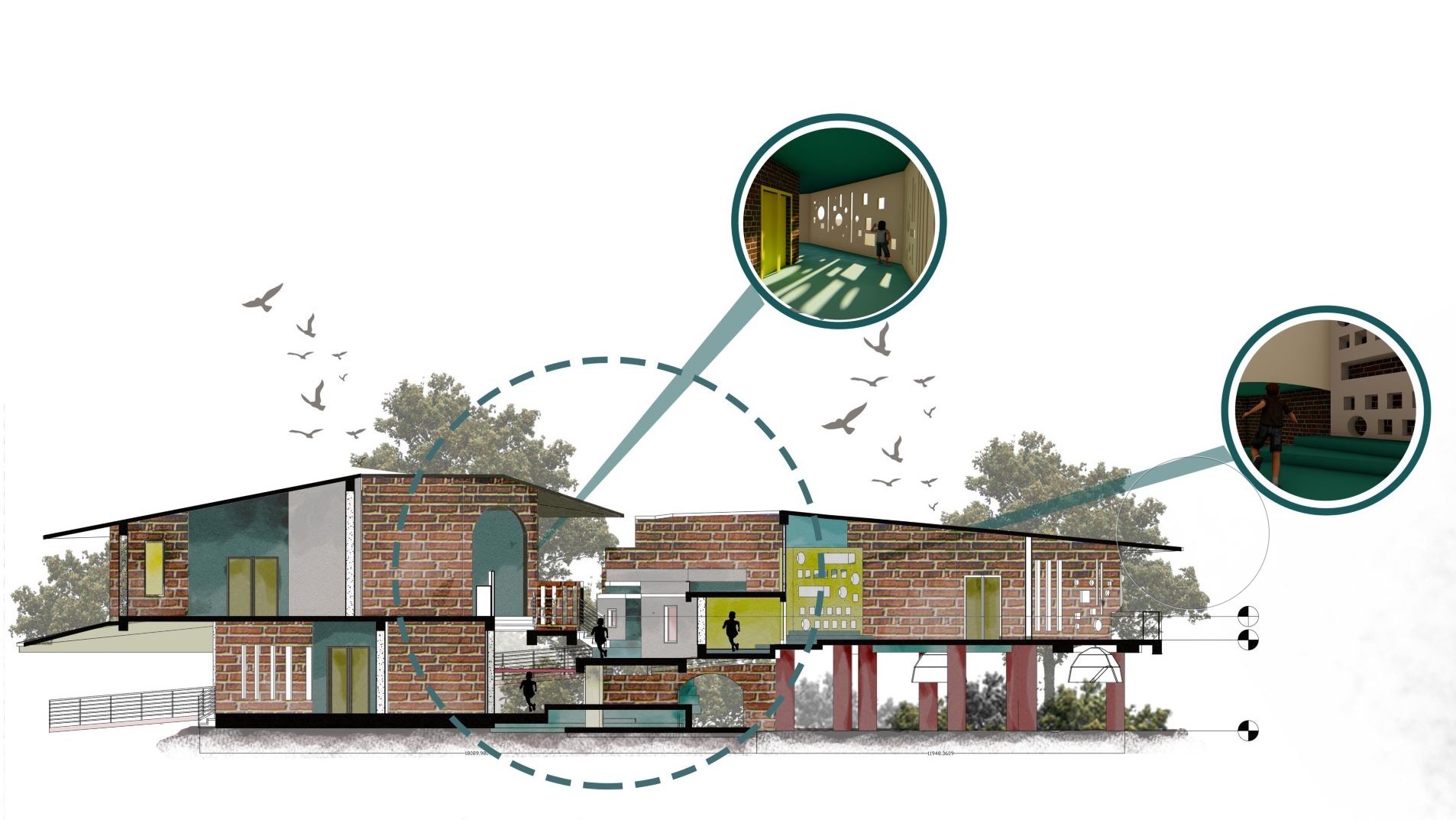top architecture design thesis 2021


BMS SCHOOL OF ARCHITECTURE
BENGALURU, INDIA

Design thesis authored by
ROSA ALEXANDER
share
THESIS SPECIFICATIONS
Thesis Title: IKSHANA, vision through spaces – Redevelopment of School for Blind, Aluva
Project type: Institution
Year of completion: 2021
The spatial intelligence in architecture is often defined using vision as their primary sense. They fail to acknowledge design as an interaction with an individual as a whole. The concepts of universal design do not end just with provision of ramps and tactile elements rather it motivates spaces to be experienced through the soul of five senses.
Architecture for the blind is like any other architecture, only better. The primary use of elements within the space and beyond as landmark guidance should be carefully addressed. The building is not the end of a design, rather the user group should feel empowered within the space and within themselves. The individual should be trained to be exposed to various principles which will help them be independent.
Echolocation is one such principle which uses sonar navigation to understand the elements around a person. The principle which was introduced by Daniel Kish is being widely practiced in daily activities and sports, one of which is football. Introduction of echolocation training along with sports will thus equip the blind feel empowered. “The liberating feeling of running freely in a field helps them let go their fears’ ‘ says Mr. Sunil. J. Mathew, lead football coach, SRVC, in one of our conversations.
The lack of one sense will amplify the effects of the other senses which can be used as an advantage in the design. The concept of sound as a sensitive device is one which is commonly found in architecture, but the use of echo as the primary element of sound is one which goes unnoticed. Thus, echolocation becomes an important key in forming architecture that celebrates echo.
“Our bodies and movements are in constant interaction with the environment; the world and the self-inform and redefine each other constantly. The perception of the body and the image of the world turn into one single continuous existential experience; there is no body separate from its domicile in space, and there is no space unrelated to the unconscious image of the perceiving self.”
― Juhani Pallasmaa, The Eyes of the Skin: Architecture and the Senses
Multi-sensory architecture through the integration of echolocation training helps improve one’s insight and outsight experience. The vision is not an exclusive design rather one that is inclusive of all senses and emotions to provide equal opportunity in a vision driven society.
The school should be and integration of principles that will assist the students to face the world around them. An opportunity for the students coming from all kinds of background to learn skills that will help them achieve to their best.
Sheets
the end
Copyright information: ©️ Student author 2022. Prior written authorization required for use.
Request permissions: If you wish to use any part of the documentation forming part of the undergraduate thesis submitted to DSGN arcHive, please seek prior permission from the concerned student author through the respective college/university.
Exclusion of liability: DSGN arcHive and its owner do not undertake any obligation to verify the ownership of any content submitted for publication/broadcast on this website and shall not be liable for any infringement of copyright by, or unauthorized use of, such content.
HOMEPAGE
Copyright © 2025 DSGN arcHive
